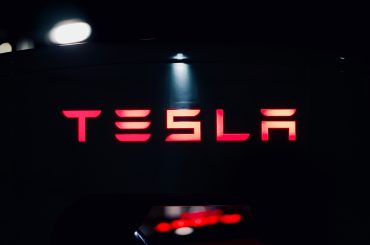For a long time in the market were cars and other vehicles powered by internal combustion. EV technology is a very different model from internal combustion engines. If you want to use EV, you need to know its latest terms. For your convenience, we have divided the car terms into different sections.
Charging in an electric car
AC rapid charging
The AC in an electric car reverses the direction of the current over some time. In short, AC is an alternating current. Several standard EV accessories get AC fast charging. That is,
- MG ZS EV
- Tata Nexon
- Hyundai Kona Electric
The AC charging speed of an electric car ranges from 1.0 to 19.2 kW. However, there is a factor that depends on that speed. That is the level of energy that the electronics can compensate for in the electric car. Therefore, it is usually best to charge your electric vehicle for 8 hours.
DC charge
DC charging is the easiest way to drive an electric car. It provides a more direct current. Many people do not have this DC charge installed in their homes. But we often see DC charging stations in rest areas or places like main thoroughfares. This charge is most needed in EV when the battery is about to deplete.
Are you thinking of going on a long journey? If so, this is the quickest charge your electric car needs. It only grabs about an hour to fully charge your EV with DC Charging.
Home charging
Most of the electric cars we see today are powered by a battery charged at home. There are two types of home charging.
1. Level 1 – Using a standard 120-volt wall outlet
2. Level 2 – Using a circuit the same size as a 240-volt circuit
Are you an electric car owner who wants to fill a range of 30 or 40 miles a day? If so, you need to install level 2 right charging equipment in your garage.
Anyone traveling less than 30 miles a day can carry a 120-volt charging cord. You can pick it up at the portable charger or outlet with the electric car. Most manufacturers have developed charging cables with 120 and 240-volt pigtails that can be switched from retailers.
Charging rate
Several factors depend on the charging rate of an electric car. That is, the remaining battery power, the overall temperature of the battery, and other factors.
The charge rate of an electric vehicle is measured in kilowatts. Therefore, it is possible to drive your electric car from 1.0 – 19.2 kW through the home charging levels 1 and 2.
Charging charge
Several factors determine the charging charge of an electric car. That is, the remaining temperature of the battery, the battery life, and other internal elements. AC charging ranges from 1.0 to 19.2 kW.
Depending on the charge you make, the power level of the car’s electronics will vary. You have several factors to consider when charging for an electric vehicle. Namely, EV’s navigation system, route plans, executable location, and applications used.
Bilateral charging
Bilateral charging is the loading or discharging of energy into automobiles. It is set up as a good selling point for electric cars. Bilateral charging facility output is between 1.9 and 9.6. The range of uses here is extensive. The charge can be applied to everything from boomboxes transported by retailers to the energy consumed by large outlets. Also, this charge can even represent an emitting petrol generator.
However, you can not give bilateral charging for petrol vehicles. However, bilateral charging can be used to charge a lost electric car. You can also use this charging system to replace generators in electric vehicles.
Battery capacity in an electric car
The volume of a battery is the amount of energy you need to power an electric car. We measure it in kilowatt-hours. What is the battery capacity in kWh? It is the number of hours that a battery can receive in kilowatts.
You will find two types of battery capacity with EV : usable capacity and gross capacity. Electric cars traveling at constant speeds may require a fraction of 30kW of power. But this profit may vary depending on the electric vehicle and the driver.
MPGe
The Miles Per Gallon Equivalent measures the distance an EV can travel with the energy available in a gallon of gasoline. Also, MPG is the efficiency of electric vehicles used by the EPA. The table and window sticker includes your mpg number, car, and driver specifications.
The companies provide the ability to compare the efficiency of mpg fossil fuels and automotive fuels. The EPA of an electric car, in general, contains the following.
- Statistical data on MPGe
- Real efficiency
- When an electric car is parked, its batteries may drain.
- Deficiencies in charging
What are the main types of electric vehicles?
FCEV
We can describe this as a prevalent and complex system. Fuel Cells The vehicle uses hydrogen-powered fuel cells to generate electricity. Toyota Motor Corporation obtained the first patent for this new electric car. They later issued their licenses to other EV manufacturers for the future of this invention.
PHEV
Plug-in hybrid electric vehicles are a system that offers a higher range of cleaner power. The batteries in these are pretty significant. You can also charge the PHEV battery externally. Anyone can use brake force recovery to capture them.
HEV
We can now introduce HEV as one of the most popular electric cars in the world. Hybrid electric cars run on one or more electric motors. Also, here is an IC engine. Also we can also charge HEV by recharging the engine or regaining brake power.
What is the essential part of an electric car?
In the case of internal combustion vehicles, the two most important parts are the engine and the transmission. But we can consider some of the essential components of electric cars. They are the power control unit, the motor, the onboard charger, and the battery.
Do electric cars use AC? DC?
Of course, EV uses AC. However, you can power its battery with DC. Accordingly, the power received from thElectric cars are one of the fastest-growing research results in the automotive industry. Their products are currently becoming extremely popular all over the world. e network system is AC. Therefore, most electric cars require an alternating external current for current.






